Learn how Papua New Guinea, Samoa, and Tonga are enhancing infrastructure resilience by fortifying roads, schools, and hospitals to protect communities and economies.
With cyclones in the Pacific predicted to intensify and sea levels there rising at rates double the global average, Pacific Island Countries are facing potentially catastrophic consequences.
Under a set of CIF-financed resilience programs, Samoa, Tonga, and Papua New Guinea have taken concrete steps to protect their citizens – and their economies – by fortifying priority infrastructure against shocks and hazards.
Rebuilding a key route for more than half of Samoa’s people
In Samoa, an upgrade to the West Coast Road (pictured below) has set new standards for withstanding storm surges and flooding.
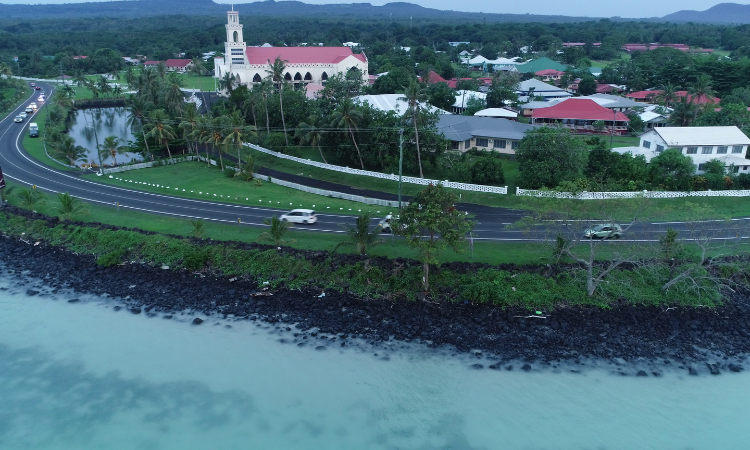
Samoa West Coast Road. Credit: Government of Papua New Guinea
Connecting Samoa’s main airport with the capital city of Apia, the road is essential for both tourism and local businesses, and acts as a critical supply route during disasters. More than half of Samoa’s population and most of the country’s industry is located along this corridor.
But the road’s coastal location makes it highly vulnerable to rising sea levels, cyclones, and other extreme weather events.
“Through [CIF] support, the major West Coast Road and some areas of our islands were upgraded to better withstand increased storm surge and flash floods caused by heavy rainfalls that we have experienced over the years more frequently.” - CEO of the Samoan Ministry of Finance, Saoleititi Maeva Vaai Betham
Under a project supported by $14.8 million in CIF finance and implemented by the World Bank, the road was completely reconstructed from the foundation layer up. The government contributed the remaining $2.2 million needed.

Samoa West Coast Road. Credit: Government of Papua New Guinea
“It's built to international standards,” explains Mr. Tiumalu Malcolm Esera, the Project Manager at the Samoan Land and Transport Authority (pictured below). “[We] upgraded it in terms of roughly 2 meters high above mean sea level.”
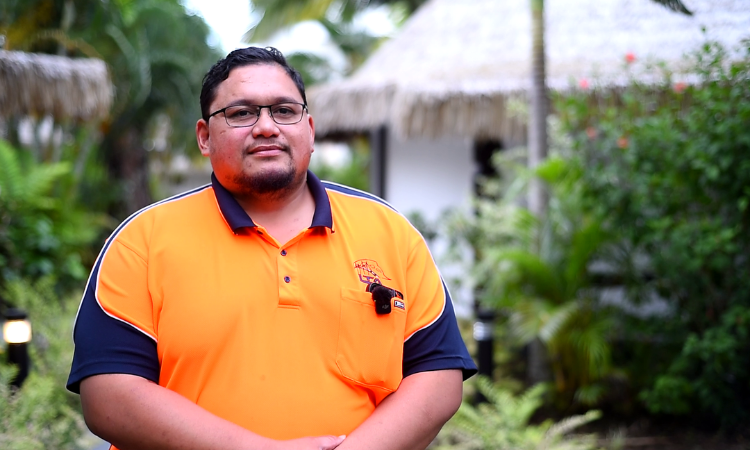
In addition to raising the height of the road, seawalls were constructed at vulnerable points. Drainage was improved to avoid flooding during heavy rains or higher-than-usual “king” tides. The upgrade also made the road safer: the shoulders were sealed, signage installed, and guard rails and reflectors added.
“Since the completion of these works in 2023,” says Malcolm, “there hasn't been any loss of connectivity on the West Coast Road.”
Importantly, the construction process led to the codification of new standards that incorporate resilience. These will apply to future roads in Samoa—a benefit that will continue long after this project has concluded.
“This project itself had a big impact on upgrading the safeguards requirements here in Samoa for our construction companies. And it also built the capacity of our local contractors to build these quite high-quality roads.” - Mr. Tiumalu Malcolm Esera, West Coast Road Project Manager at the Samoan Land and Transport Authority
A model for resilient wharves in Papua New Guinea
A hub for people and goods travelling to and from the country’s outer lying islands, Alotau Wharf in Papua New Guinea (pictured below) was completely rebuilt to a new, elevated design including a floating concrete pontoon.
Assisted by over $5 million in CIF finance and implemented by the ADB, the wharf’s innovative design can accommodate a raised platform as sea levels continue to rise. The pilings it is built on were also constructed to withstand earthquakes.
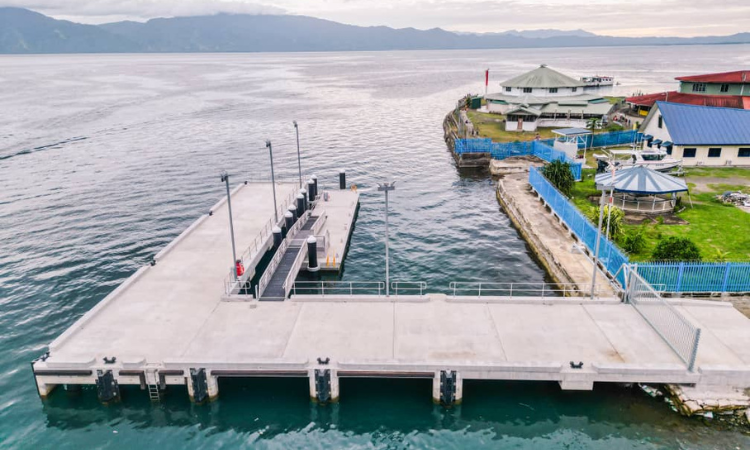
Alotau Wharf. Credit: Government of Papua New Guinea
Speaking at the opening of the new wharf, the country’s Deputy Prime Minister John Rosso called it “a model for climate-proofing infrastructure in Papua New Guinea.” During an emergency, the wharf is a lifeline for almost 300,000 people living on the outer islands and is crucial for employment and trade in the province.
Acting fast to protect heath infrastructure
In Tonga, a key hospital on the coast was found to be at risk from erosion, cyclones and tsunamis. Thanks to CIF and the ADB, Ha’apai Hospital was relocated to a safe elevation inland.
This type of “managed retreat” is becoming increasingly important around the world, to protect both communities and critical infrastructure from a predicted rise in sea levels and extreme weather events.
"The erosion rate in the Central Islands is a lot higher than most of the places in Tonga, so we had to relocate the entire hospital. And part of that process was to ensure that the hospital also served as an evacuation center.” - Sione Fulivai, Fund Manager of the Tonga Climate Change Fund.
When a tsunami hit Tonga in 2022, the new hospital survived unscathed. The move also allowed for an upgrade, with radiology services now provided for the first time.
Five schools in Tonga were also climate-proofed, to withstand disasters with minimal need for costly repairs. One of the schools even served as an evacuation center during Cyclone Gita in 2018, demonstrating how resilient infrastructure can provide a cascade of additional benefits.
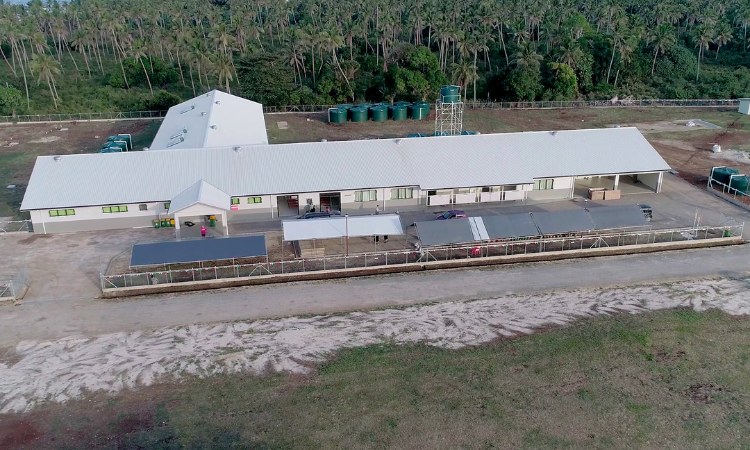
One of the schools strengthened using CIF finance. Credit: Government of Tonga.
Securing both lives and livelihoods
In total, CIF delivered over 40 units of renovated or newly constructed small-scale infrastructure across all three countries, including emergency shelters, storm walls (pictured below) and evacuation roads. These long-term investments are good examples of impactful and sustainable results from CIF’s resilience program in the Pacific.
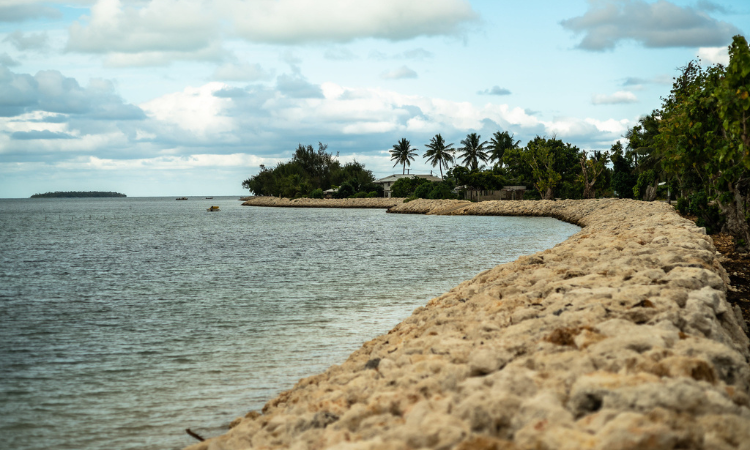
Coastal protection measures along the Hahake (Eastern Tongatapu) coastline. Credit: Asian Development Bank
Together, these investments not only make life safer during extreme weather events, but also help keep markets open, repair costs down, and local businesses afloat all year round.
